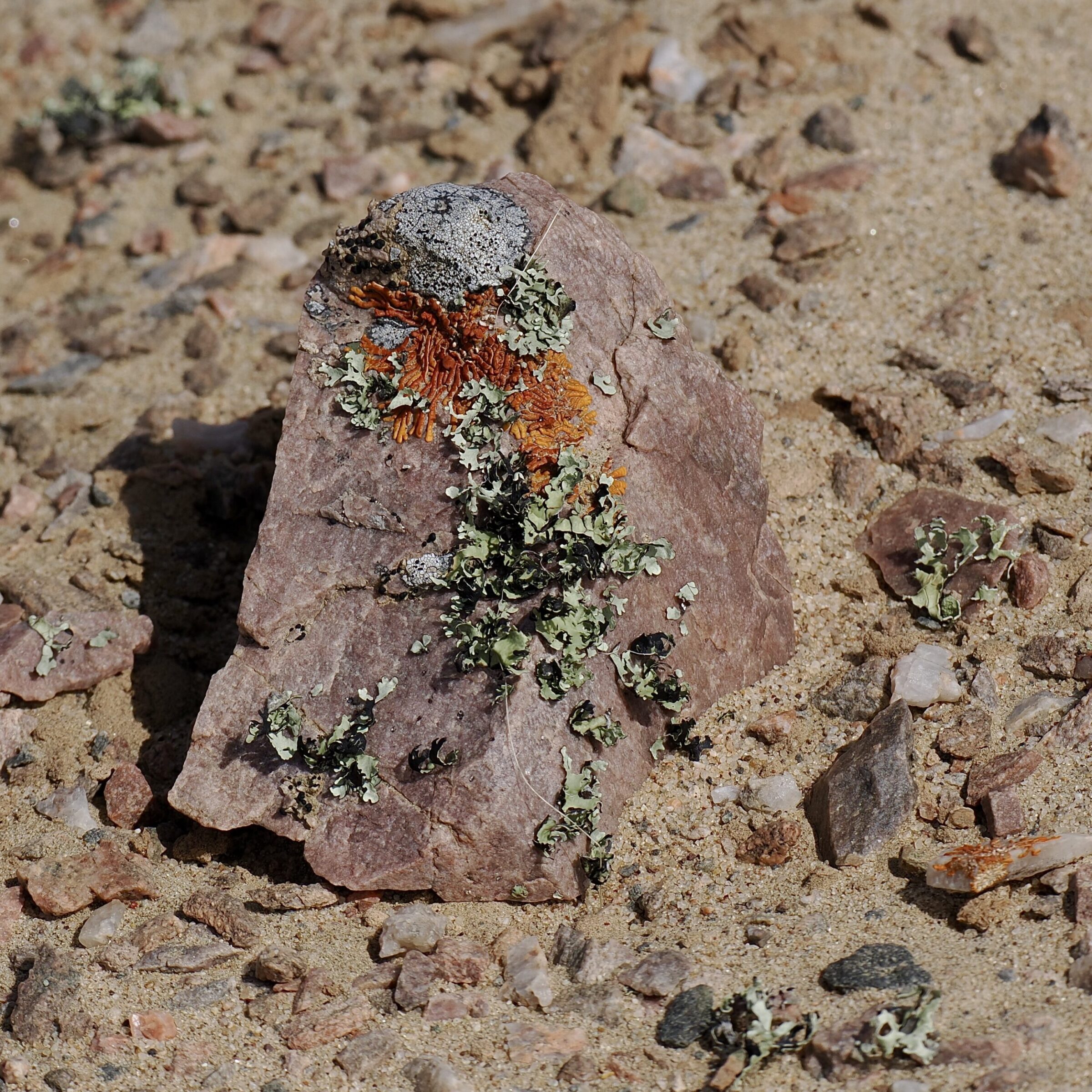From 9.44 am through 10 am on 14 November 2022, the pictured rock and yours truly were sharing the very same hilltop.
Whilst the rock itself was an inanimate object, living beings very successfully occupied a deal of its exposed surfaces.
These beings are neither plants nor animals; as you can see, more than one species are obviously-present on this particular rock.
A lichen is a composite organism that emerges from algae or cyanobacteria living among the filaments (hyphae) of the fungi in a mutually beneficial symbiotic relationship.
The italicised quotation is from Wikipedia’s (really good) entry on lichens.
It nicely describes lichens as relatively self-contained miniature ecosystems,
They cover circa 7% of “our” planet’s surface, across just about every kind of environment, including places where no plants can survive.
Many (not all) lichens are, however, unable to tolerate polluted air; their presence/abundance/absence can be a useful indicator of air quality.
Lichens present humans with many and varied uses, benefits and problems.
The lichens on the pictured rock are doing well in what is probably the world’s second driest non-Antarctic region, rain-wise.
However, the near-Atlantic side of the Namib is the world’s foggiest desert.
On average, thick mists roll in circa one day in two, so “water supply” is in fact much more “reliable” than in most deserts…at least for organisms that have become adept at “harvesting” water from fog.
